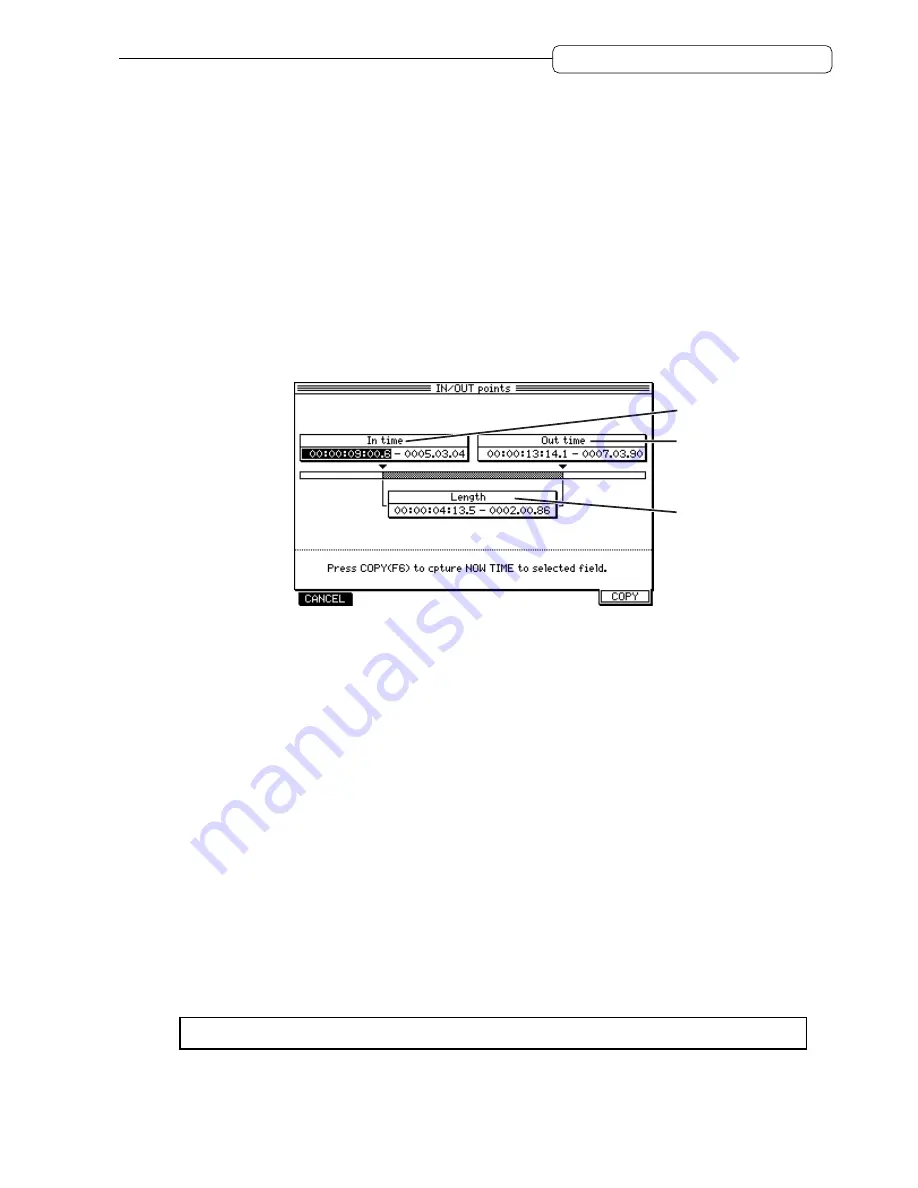
47
Chapter 3: Transport/Locate Operation
IN point and OUT point
You may also store locate points to the
[IN]
key and the
[OUT]
key in the same way as for the
[INPUT SELECT]
keys and the
[TRACK SELECT]
keys to later recall the points directly. In addition, you can use the locate points
stored in the
[IN]
/
[OUT]
keys (these points are called the “IN point” and “OUT point”) not only for the locate
operation but to specify the area for re-recording (punch in/out) or the edit area.
Storing the IN point and OUT point
To store the IN/OUT points, you can directly enter the time value or assign direct locate points to the
[IN]
/
[OUT]
keys.
■
Specifying the IN/OUT points by the time values
1. Press the [IN] key or the [OUT] key.
The DPS16 displays the IN/OUT points window where you can specify the IN/OUT points.
2
1
3
1
In time
Indicates the time/BBC value of the IN point.
2
Out time
Indicates the time/BBC value of the OUT point.
3
Length
Indicates the length between the IN and OUT points.
2. Move the cursor to the
In time
or
Out time
field and enter the desired time value (or enter the BBC
value in the
BBC
field). For more information on how to enter the value, refer to page 16.
When you change the time or BBC value of the IN/OUT points, the
Length
field will be updated. When you
press the
[F6]
(
COPY
) key, the current position of the DPS16 is entered to the selected field.
■
Storing direct locate points to the [IN]/[OUT] keys
1. Press the [MEMORY] key to capture the desired locate point.
You may store locate points while the DPS16 is recording, playing, or stopped. When you press the
[MEMORY]
key, the next Locate Memory window opens, indicating the time value in the
Time
field at which
you pressed the
[MEMORY]
key.
2. Press the [IN] or [OUT] key.
The captured locate point is stored as the IN point or OUT point.
✐
TIP :
Press the
[F1]
(
CLOSE
) key to cancel the operation.






























